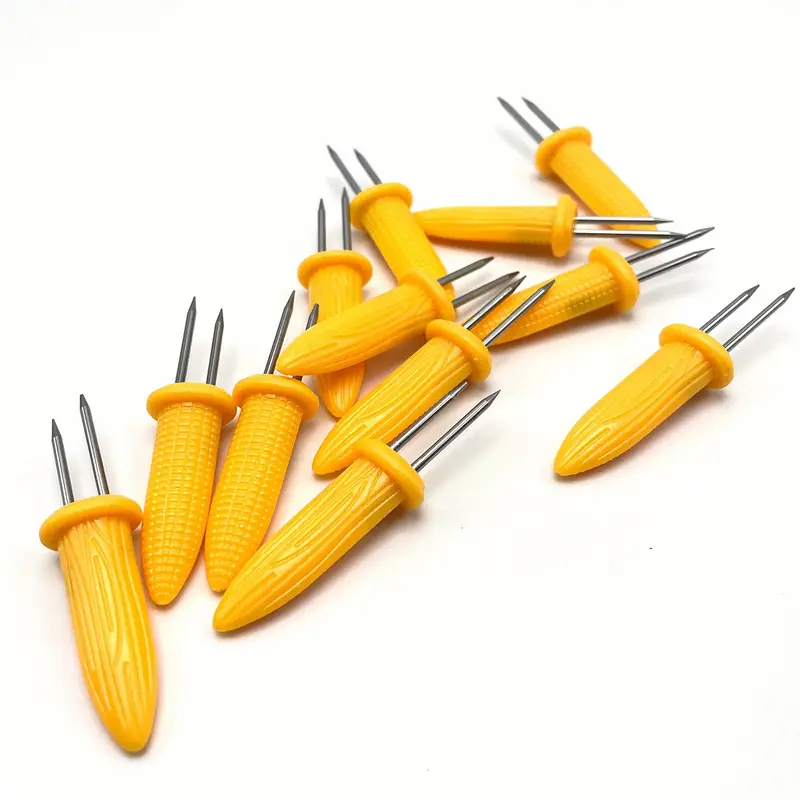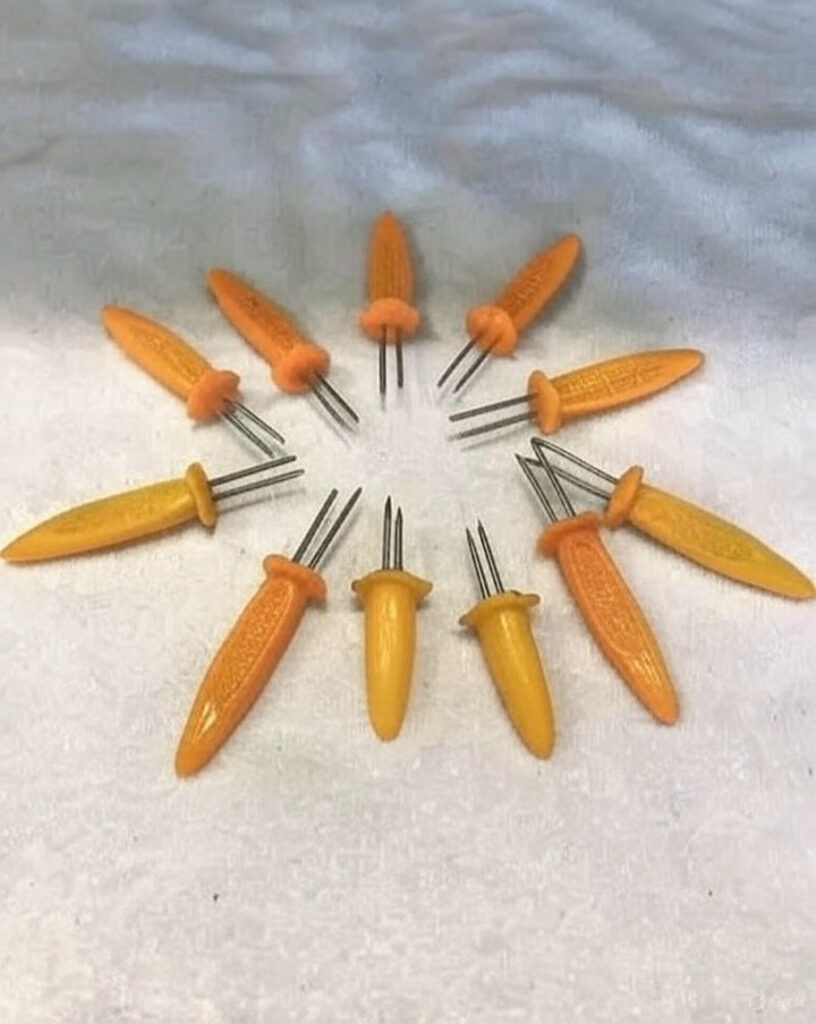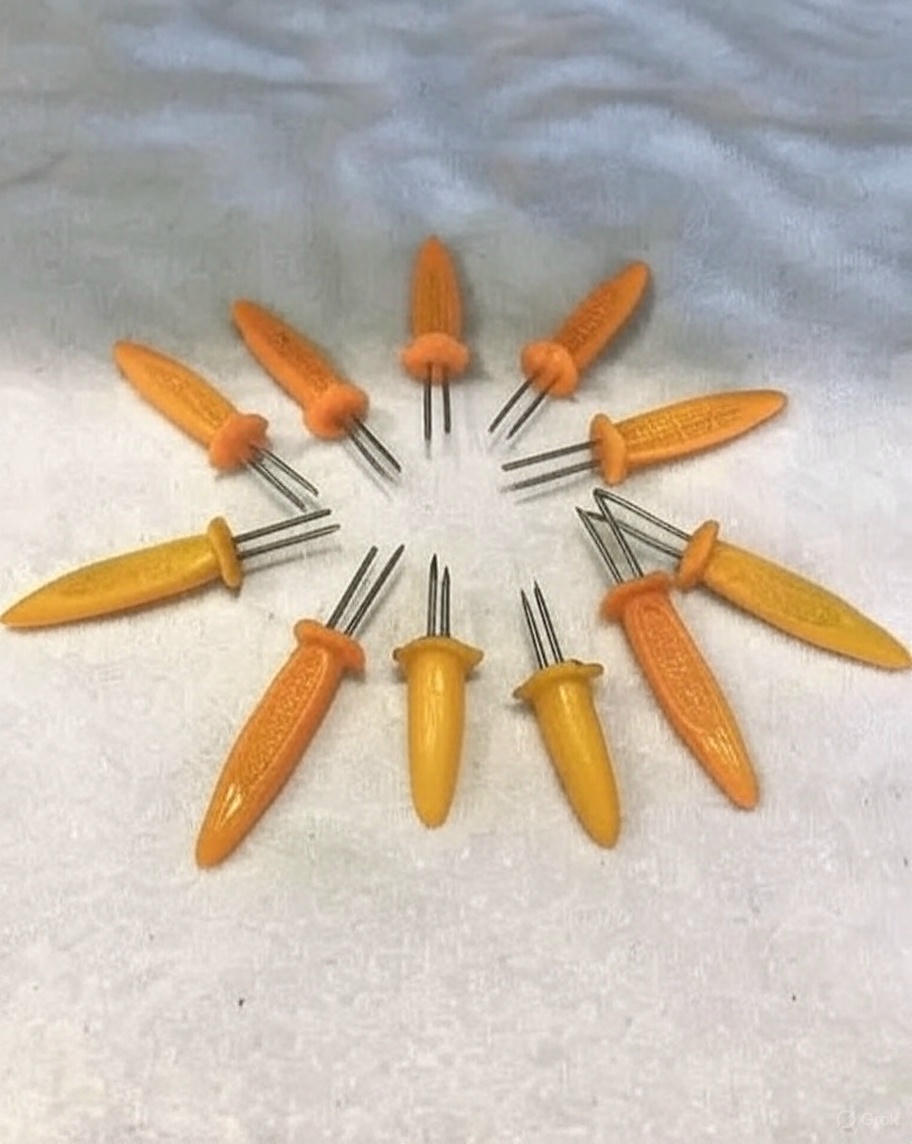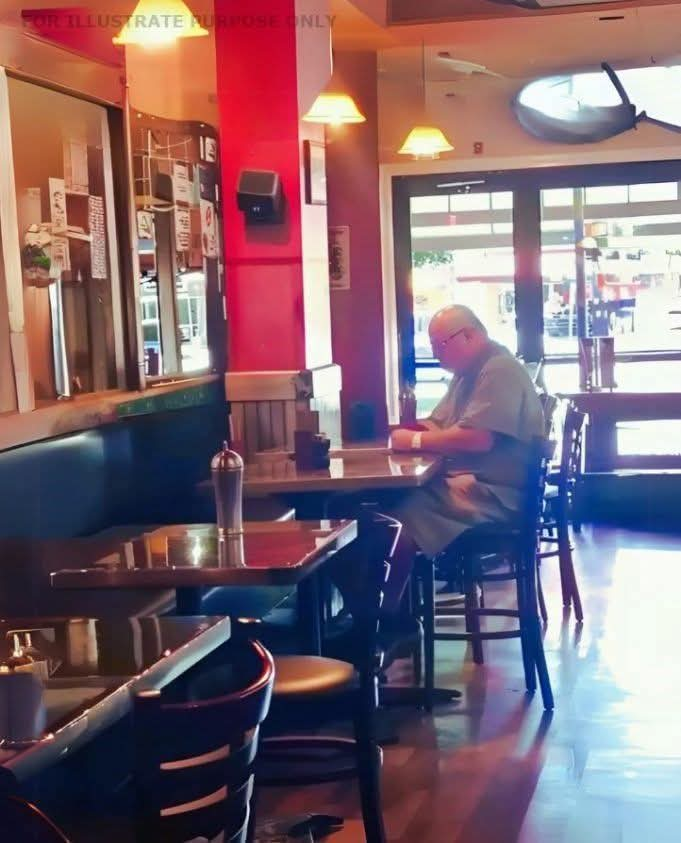A Kernel of History: The Story of Corn on the Cob Holders
Corn on the cob—just the phrase itself conjures images of warm summer evenings, backyard barbecues, and buttery fingers. It’s one of those universally loved foods that manages to be both rustic and indulgent. But as anyone who’s ever attempted to eat hot, juicy corn fresh off the grill knows, there’s a trick to enjoying it without scalding your fingers or ending up with butter all over your shirt. Enter the unsung hero of corn consumption: the corn on the cob holder.
Corn on the Cob Holders
Though often overlooked on the dinner table, these clever little tools have a surprisingly rich history, evolving from humble origins to become kitchen drawer staples in homes across the globe. From their early days to their modern designs, corn holders have not only transformed the way we enjoy corn but have also become tiny icons of culinary culture.

A Humble Beginning: The Origins of the Corn Skewer
The story of the corn on the cob holder dates back to the early 19th century. As corn became more widely cultivated and consumed in North America, the need for a clean, safe, and efficient way to handle freshly cooked ears of corn grew right alongside it. People loved the taste of freshly boiled or roasted corn—but not the steam burns and slippery mess.
Initially, early adopters resorted to simple, makeshift solutions: sharpened twigs, animal bones, or hand-carved wooden sticks. These primitive tools got the job done—barely. But necessity is the mother of invention, and it wasn’t long before creative minds started designing dedicated skewers specifically for holding corn on the cob.
Some of the earliest manufactured corn holders were carved from bone or hardwood, often featuring two small prongs designed to be inserted into either end of the cob. The double-prong system was revolutionary for one reason: stability. The cob could now be held securely without slipping or rotating unexpectedly—important when you’re tackling juicy kernels with buttery hands.

From Simple Tool to Stylish Utensil: The Evolution of Design
As the 20th century rolled in, corn holders started to evolve beyond their utilitarian roots. Metal became the material of choice for the prongs, while the handles grew more decorative and ergonomic. Mid-century America, with its booming home goods market and love for novelty kitchen gadgets, embraced corn on the cob holders with open arms—and mouths.
Manufacturers experimented with colorful plastic handles, themed shapes (ever see holders shaped like little corn cobs or pigs?), and eventually even heat-resistant materials. Some designs even featured molded rubber grips or whimsical themes ranging from farm animals to cartoon characters. The corn holder had officially become fun.
Today, the modern corn holder is a study in ergonomic perfection. Sleek stainless-steel prongs combined with non-slip grips and easy-to-clean surfaces have taken this humble tool into the realm of culinary sophistication. In fact, there are even luxury corn holders now, designed by high-end kitchenware brands—because who says eating corn can’t be elegant?

Cultural Significance and Communal Moments
It’s not just about utility or flair—corn holders carry cultural weight, especially in regions where corn is more than just a food item. In parts of North and South America, Africa, and Eastern Europe, corn (or maize) plays a significant role in diet and tradition. It’s a food that brings people together—shared in fields, markets, and around bonfires.
In the United States, corn on the cob is a quintessential summertime staple, gracing the tables at picnics, 4th of July celebrations, state fairs, and county cookouts. And with every juicy ear served, a pair of corn holders is typically not far behind. They symbolize togetherness, celebration, and the joy of simple, hearty food.
In fact, many people treasure vintage corn holders from their childhood—those plastic yellow ones shaped like tiny cobs themselves. There’s something about that old-school design that hits the nostalgia button hard, reminding us of backyard dinners with grandparents or family reunions on the farm. You’ll even find collectors online scouring antique stores and auctions for rare sets, treating them as culinary keepsakes.
Practicality Meets Whimsy: Today’s Corn Holder Market
Fast forward to today, and corn on the cob holders remain as popular as ever—but now they come with bells and whistles. Some feature locking mechanisms to keep the prongs from slipping out. Others come in sets with matching trays to hold the cobs upright for buttering and seasoning. There are even silicone versions for children, designed with safety tips and fun shapes.
For eco-conscious consumers, there are bamboo and biodegradable models—a nod to the tool’s original wooden roots, only with modern sustainability in mind.
But perhaps the most delightful evolution has been the rise of custom and themed corn holders. Hosting a luau? Get yourself some tiki-style skewers. BBQ with a cowboy twist? There’s a set with little cowboy boots on the ends. Want to impress at Thanksgiving? Go for turkey-shaped handles. In short: if you can imagine it, it probably exists on Etsy.
The Enduring Legacy of a Tiny Tool
Corn on the cob holders are more than just culinary accessories. They’re conversation starters, nostalgic treasures, and, for many, the secret to enjoying summer’s favorite vegetable with minimal mess and maximum flavor.
These pint-sized tools have stood the test of time, weathered design fads, and adapted to changing culinary trends. Yet their mission has remained constant: help us enjoy one of nature’s simplest pleasures without burning our fingers—or dropping the cob in our lap.
So, the next time you dig into a plate of steaming, butter-drizzled corn, take a moment to appreciate those trusty little holders. Behind their cheerful plastic handles or sleek metal frames lies a fascinating journey through history, innovation, and shared joy.
After all, as anyone who’s had a cob roll off their plate can tell you—corn on the cob without a good pair of holders is just chaos on a stick.





